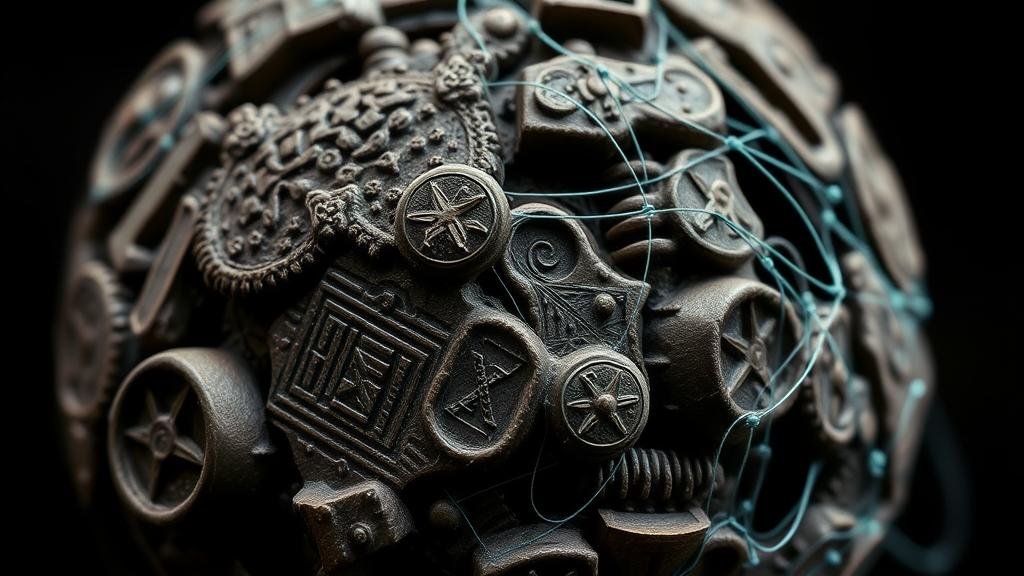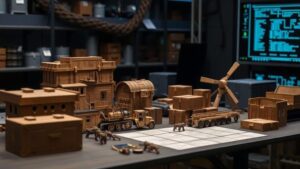Applying AI to Simulate Historical Trade Interactions for Relic Predictions
Applying AI to Simulate Historical Trade Interactions for Relic Predictions
The integration of Artificial Intelligence (AI) into historical research has opened new avenues for understanding economic exchanges and cultural interactions in antiquity. This paper explores the application of AI technologies to simulate historical trade interactions and predict potential relic discoveries in specific geographical locations. By utilizing advanced data modeling techniques, researchers can analyze vast datasets to draw insights that would otherwise remain obscured in traditional methodologies.
1. Introduction
Historical trade networks have long fascinated scholars, as they provide insights into how cultures interacted, exchanged goods, and influenced one another. For example, the Silk Road, which connected Asia with Europe from around 130 B.C. to the 1450s A.D., exemplifies significant economic and cultural exchanges. This study seeks to leverage AI to better understand these interactions and improve predictions of archaeological relic discoveries based on simulated trade activities.
2. Historical Context of Trade
Trade routes such as the aforementioned Silk Road facilitated the movement of not just goods, but also ideas, technologies, and cultures. The Mediterranean trade, prominent from 1200 B.C. until the fall of the Roman Empire in A.D. 476, involved different civilizations including the Phoenicians, Greeks, and Romans. Key commodities included spices, textiles, and precious metals. Analysis of these networks reveals patterns that can inform relic prediction strategies.
3. The Role of AI in Simulating Trade Interactions
Artificial Intelligence, particularly machine learning algorithms, is pivotal in simulating these historical trade interactions. By analyzing large sets of trade data, AI can identify patterns and correlations that previous methods might miss. This includes:
- Natural Language Processing (NLP) for historical text analysis to extract trade-related information.
- Predictive analytics to forecast potential relic sites based on trade routes.
- Computer vision for analyzing artifacts and recognizing similarities across different historical contexts.
4. Data Sources for Simulation
The success of AI in modeling historical trade interactions heavily relies on high-quality data sources. Some key datasets include:
- Historical trade documents: Records from merchant logs and trade guilds, dating back to the Roman and Byzantine periods.
- Archaeological findings: Excavation records and databases that categorize the location and type of discovered artifacts.
- Geospatial data: Geographic Information Systems (GIS) data that highlights ancient trade routes and settlements.
5. Methodology
The methodology for applying AI to simulate trade interactions includes the following steps:
- Data collection: Gathering data from diverse sources, including academic journals, archaeological databases, and historical archives.
- Data preprocessing: Cleaning and organizing the data to ensure accuracy and relevance.
- Model development: Utilizing machine learning models to analyze data and simulate trade-related scenarios.
- Validation: Comparing AI-generated predictions with known archaeological findings to assess model accuracy.
6. Case Study: Predicting Roman Trade Relics Using AI
Consider a study focusing on predicting relics from Roman trade routes. By analyzing ancient texts and archaeological records using NLP, researchers can determine frequently traded commodities along paths traveling from Rome to other Mediterranean locations. For example, materials such as pottery and coins can indicate trade activity yet unexplored by archaeologists.
By simulating trade dynamics and correlating them with archaeological site data in locations like Ostia Antica (a major Roman port) and Pompeii, predictive models successfully forecasted potential undiscovered relics. This demonstrates not only the accuracy of predictive analytics but also the potential of AP in archaeology.
7. Challenges and Limitations
Despite the promising capabilities of AI, several challenges and limitations exist:
- Data sparsity: Many historical records are incomplete or lost, which can hinder the accuracy of AI predictions.
- Interdisciplinary barriers: Collaboration between historians, archaeologists, and data scientists is essential yet often lacks in practice.
- Technological limitations: The need for advanced computational resources can restrict accessibility for some research institutions.
8. Conclusion
The application of AI in simulating historical trade interactions offers a transformative approach for archaeological predictions. By understanding the dynamics of trade routes, researchers can uncover hidden patterns that inform the discovery of relics. The effectiveness of such models relies heavily on quality data and the collaboration between various disciplines, paving the way for more integrated historical research methodologies.
Future research should focus on improving data collection processes and fostering interdisciplinary partnerships to refine AI applications in archaeology. Ultimately, the adoption of AI in this context could not only enhance our understanding of historical trade but also enrich the narrative of human cultural evolution.



